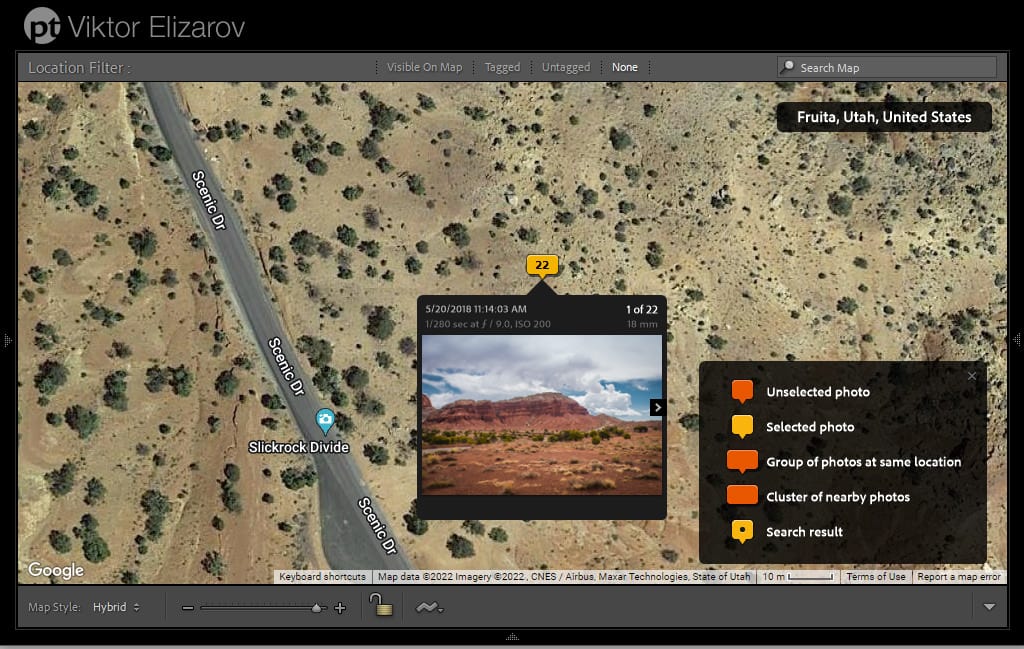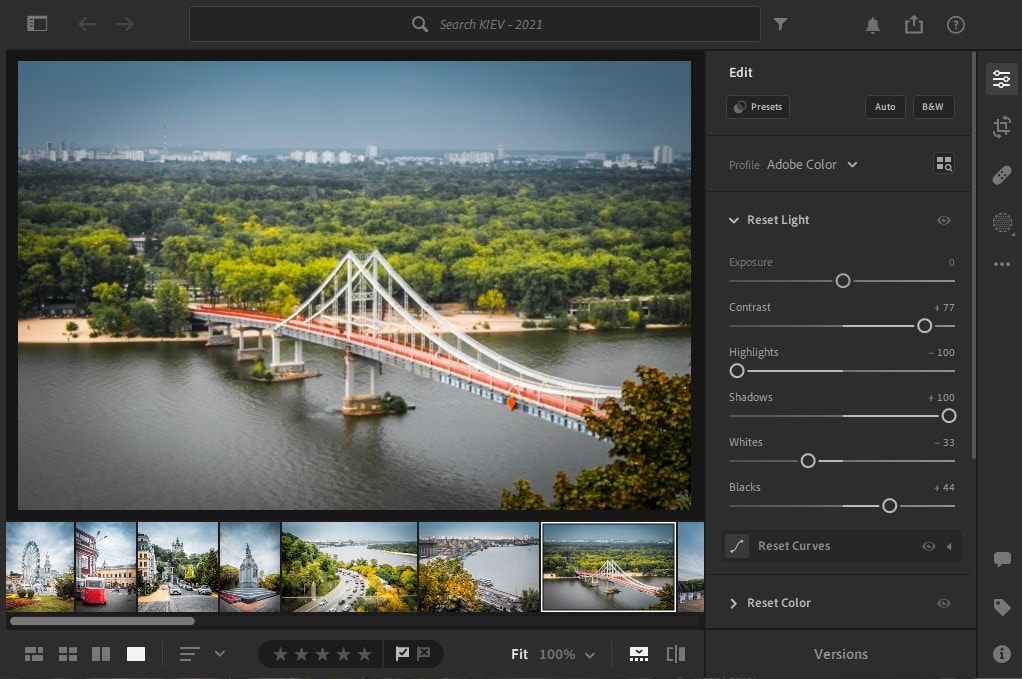Lightroom Traditional vs Lightroom CC that’s the query.
Lightroom Traditional and Lightroom CC are each Adobe software program merchandise designed for managing and enhancing digital photographs. They share some widespread options, however there are additionally vital variations between the 2.
On this article, I’ll evaluate the 2 variations of Lightroom and aid you resolve which one is best for you.

The principle variations between Lightroom Traditional and Lightroom CC are in storage strategy and have units. Lightroom Traditional depends on native storage, with the picture library residing on the consumer’s pc and it presents a extra full function set, together with superior enhancing and organizational instruments. Lightroom CC, adopting a cloud-centric strategy, shops photographs within the Adobe Artistic Cloud and presents a simplified toolset, best for customers prioritizing mobility and accessibility throughout units.
Historical past of Lightroom
Do you know that the unique Lightroom’s identify is Adobe Photoshop Lightroom?
Adobe launched Photoshop in 1990, changing into the world’s customary graphic enhancing and compositing software.
With the explosion of digital images in the beginning of the century, Adobe realized that Photoshop urgently wanted help for a brand new file format of digital images – RAW photos.
In 2003 Adobe accomplished the event of the Adobe Digicam Uncooked (ACR) software as a plugin for Photoshop. It allowed photographers to edit natively RAW photos and rasterize them for additional manipulation in Photoshop.
However the brand new challenge emerged virtually instantly. Due to the low price of taking extra pictures in digital images, the variety of photographs taken with digital cameras skyrocketed. However Photoshop was not geared up to deal with giant photograph libraries as a result of it didn’t have digital asset administration (DAM) module.
To shut the hole, Adobe created a brand new software to accompany Photoshop, aiming to simplify the administration of the excessive quantity of digital photographs.
The idea of Lightroom was born.


In 2006 Adobe launched the primary model of Lightroom. It constructed the Library module from scratch to deal with digital asset administration (DAM). And for the Develop module took the Adobe Digicam Uncooked (ACR) plugin from Photoshop and constructed a brand new interface round it.
The appliance was given the identify Adobe Photoshop Lightroom.
The early iteration of Lightroom hardly had any enhancing capabilities. You may alter primary parameters reminiscent of publicity, brightness, coloration stability, distinction, and that was about it. It didn’t even have crop performance. The thought was to make use of Lightroom for photograph group principally and, for superior enhancing, to make use of Photoshop.
After I began utilizing Lightroom in 2006, I did 90% of my photograph enhancing in Photoshop. I used Lightroom to handle my photograph library and to appropriate publicity; I carried out the remainder of the workflow in Photoshop.
However through the years, Adobe added a collection of enhancing instruments, useful functionalities, and modules to Lightroom.
By the yr 2015, when Lightroom 6 was launched, I hardly used Photoshop in any respect. Due to the implementation of assorted photograph enhancing instruments, I might full 90% of my digital workflow in Lightroom. The necessity for Photoshop diminished.
It was easy occasions; we had just one model of Lightroom.


However in 2017, Adobe determined to spice issues up and make every thing extra complicated.


They launched a brand new model of Lightroom, which no one anticipated and requested for, underneath the identify of Lightroom CC (Artistic Cloud). On the identical time, they renamed the unique Lightroom to Lightroom Traditional CC (Artistic Cloud).
The introduction of a brand new cloud-based model of Lightroom was complicated, however the unique model’s renaming took it to a different degree. Primarily based on leaked data from Adobe, the unique plan was to rename the unique model to Lightroom Skilled and to offer the Lightroom Cloud identify to a brand new model. However the huge brains from the advertising division thought the Skilled identify would indicate that the brand new Lightroom isn’t for professionals, lessening its enchantment.
That is how we find yourself with Lightroom Traditional CC.


However the identify Lightroom Traditional made many photographers consider that it indicated a legacy program and that Adobe would cease growing it. And for the reason that new model of Lightroom CC was not geared up with many options, it induced panic within the photograph group.
I hoped that over time, Adobe would merge two variations into one, and we might take pleasure in a quick and responsive program with a contemporary interface that has all performance of the unique Lightroom. Nevertheless it by no means occurred.
In 2019 the ultimate renaming occurred. Adobe dropped CC (Artistic Cloud) from the names of each variations.
As of writing, we now have two variations of Lightroom: Lightroom Traditional and Lightroom. And Lightroom is offered in 3 variations: Desktop, Cellular, and Internet (browser-based).
This text goals to elucidate the variations between Lightroom Traditional and Lightroom and what benefits and drawbacks every model has.
Lightroom Traditional vs Lightroom CC: the Fundamental Variations
1. Picture Storage: Cloud vs Native
The principle distinction between Lightroom Traditional and Lightroom (former Lightroom CC) is the way you retailer your photographs.
Lightroom shops photographs within the cloud. Each time you import new butch of photographs, Lightroom uploads them to the cloud. You’ll be able to entry the complete variations of your photos from all linked units.
With Lightroom Traditional, you retailer all of your imported photographs regionally on the pc onerous drive. However you continue to can synchronize particular person Galleries with cell units utilizing Adobe Artistic Cloud.
2. Photograph Group
Lightroom Traditional has a modular construction. The Library module serves the perform of superior digital asset administration (DAM). You’ll be able to set up your photos utilizing folders, galleries, and tags. Plus, you may group photographs in digital stacks and create digital copies.
Lightroom (former Lightroom CC) doesn’t have a Library module; you set up and develop your photographs in a single consumer interface. Though I like this strategy, it ends in restricted photograph group capabilities.


In Lightroom, you set up photos utilizing digital albums, plus this system closely employs AI performance, making an attempt to determine the content material of your photographs and tag them mechanically.
3. Importing Images
I all the time was essential of the Import module of Lightroom Traditional due to its complexity. Typically it turns into a significant problem for photographers simply beginning to study this system.
In Lightroom CC, the import module doesn’t exist, and there are not any import choices in any respect. You cannot even choose what uncooked information to import and what to keep away from. There are not any renaming, metadata, or watermark functionalities. You dump the photographs into this system and resolve what to do with them later.
4. Modifying and Growing Images
Lately Adobe beefed up the enhancing instruments in Lightroom (former CC), and they’re virtually on par with Lightroom Traditional. Nevertheless it nonetheless lacks some functionalities I exploit in my workflow.
Lightroom doesn’t have important instruments reminiscent of Calibration, Snapshots, and Historical past. It’s a deal breaker for me.
5. Exporting Images
When Lightroom was launched, it solely supported JPEG export format. Though the export panel has extra exporting choices, it’s not even near the Export module of Lightroom Traditional. It’s not even referred to as an export course of; it’s the Share performance.
6. Plugins Assist
One of many largest benefits of Lightroom over competing functions is the help for plugins. The plugins help you prolong the performance of Lightroom by putting in third-party add-ons. The Lightroom Traditional even has a Plugin Supervisor the place you may deal with the entire put in plugins.
In my images, I exploit a good variety of plugins reminiscent of SmugMug, Flicker, JPEGmini (picture compression), and several other plugins that assist me with preset growth.
Lightroom doesn’t help plugins in any respect. You cannot even set up plugins developed by Adobe.
7. Lacking Modules
Lightroom Traditional has 7 modules: Library, Develop, Map, E-book, Print, Slideshow, and Internet. Though I don’t use the E-book, Print, and Slideshow modules, I do know that many images companies closely actually on these modules. And they don’t exist in Lightroom.
In my case, I like the Map module. I’ve all my journey photographs mapped to the interactive map and may visually assess the places I visited and photographed. I additionally use the Map module for planning my journeys.


Benefits of Lightroom Traditional
- It has extra superior instruments and functionalities.
- You don’t depend on a quick Web connection to have the ability to synchronize photos and edits.
- It has an infinite quantity of instructional sources for all ranges.
- Lightroom Traditional means that you can handle movies. It even presents some restricted video enhancing performance.
Disadvantages of Lightroom Traditional
- It’s sluggish. The event of Lightroom Traditional began greater than 2 a long time in the past. It depends on previous and outdated applied sciences. Adobe struggles to optimize its velocity.
- The modular construction isn’t best for consumer expertise.
- It’s tougher to study.
- It’s a must to implement a backup technique as part of your digital images workflow.


Benefits of Lightroom CC
- It’s quick and snappy.
- It has a extra trendy and intuitive consumer interface.
- Simpler to study
- Computerized backup on the cloud.
Disadvantages of Lightroom CC
- The $9.99 Adobe Artistic Cloud Pictures plan contains solely 20Gb of storage.
- It turns into costly you probably have a photograph library bigger than 1TB. In my case, my photograph library is 6TB huge, and it could price me $60 per 30 days for cloud storage solely.
- In a nutshell, it’s a strip-down model of Lightroom Traditional.


Who Ought to Use Lightroom Traditional?
Lightroom Traditional is for everybody severe about images and desirous to study this unbelievable interest’s ins and outs.
And if you’re knowledgeable photographer, you already know there isn’t a escape from a submarine, and the lightroom Traditional is the one approach to go.
Who Ought to Use Lightroom CC?
To be trustworthy, I’m struggling to pinpoint who’s the target market for stand-alone Lightroom. It’s designed for photographers with picture libraries smaller than 1T and closely depends on cell images. However then once more, you could be a cell photographer and synchronize your photographs taken with cell units with Lightroom Traditional; that is what I do.
See additionally: Tips on how to Save Preset in Lightroom Cellular
I don’t see any purpose to subscribe to the Lightroom Plan ($10/month) as a substitute of the Pictures Plan ($10/month), which comes with all variations of Lightroom plus Photoshop.
I see the usefulness of Lightroom if you’re beginning to study images. You subscribe to the Pictures plan and start the training course of with Lightroom as a result of the training curve is much less steep. And over time, you turn to Lightroom Traditional.
Lightroom CC vs Lightroom Traditional | Remaining Ideas
After I evaluate Lightroom Traditional ve Lightroom CC, I ask myself a query: Can I run my images enterprise utilizing solely Lightroom Traditional? And the reply is particular YES.
However I cannot carry out all images organizational, enhancing, and publishing duties utilizing Lightroom CC solely. I nonetheless want Lightroom Traditional or Photoshop.
I believe Adobe ought to merge two variations of Lightroom right into a single software and cease complicated hundreds of thousands of Lightroom customers.